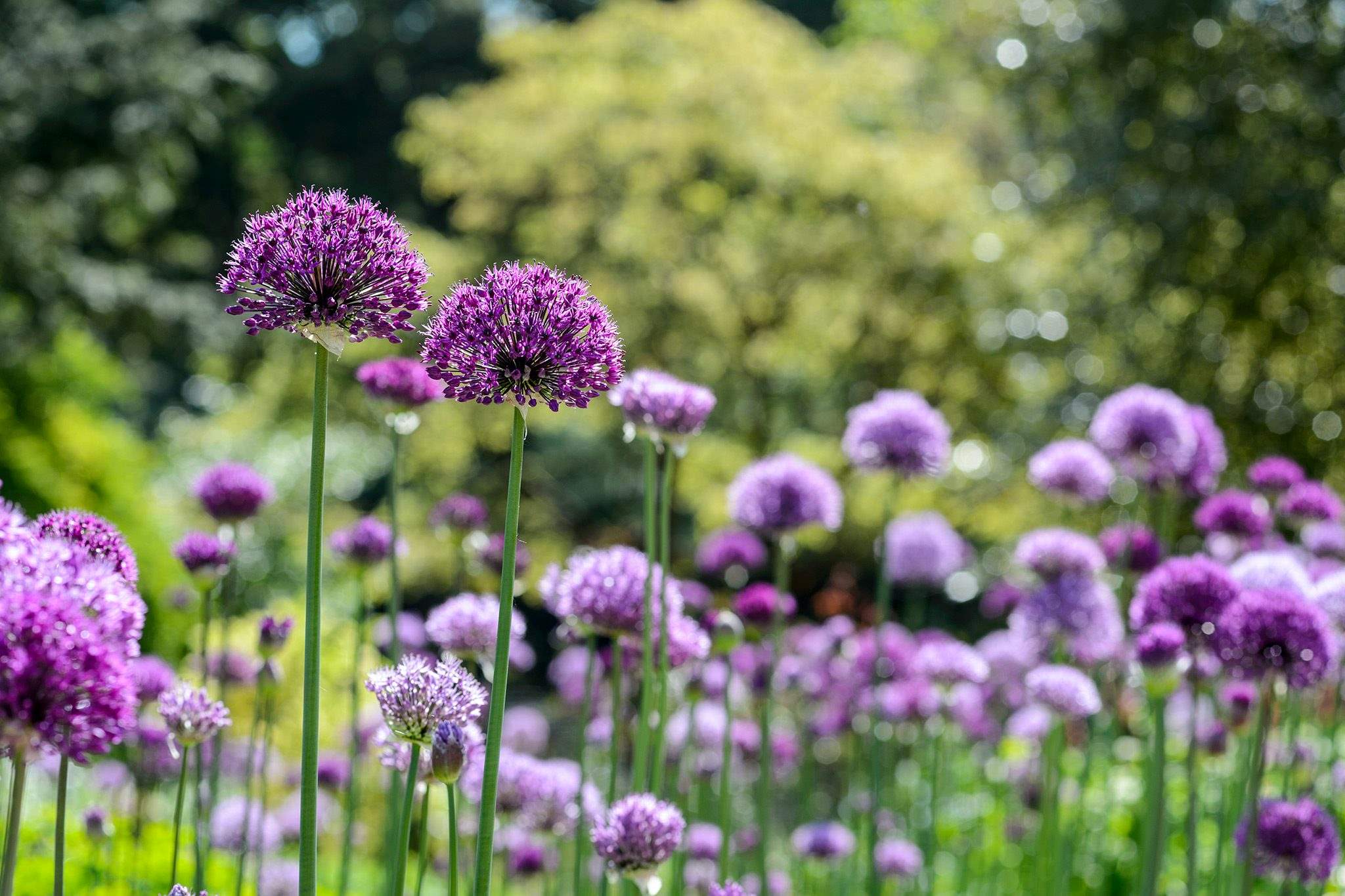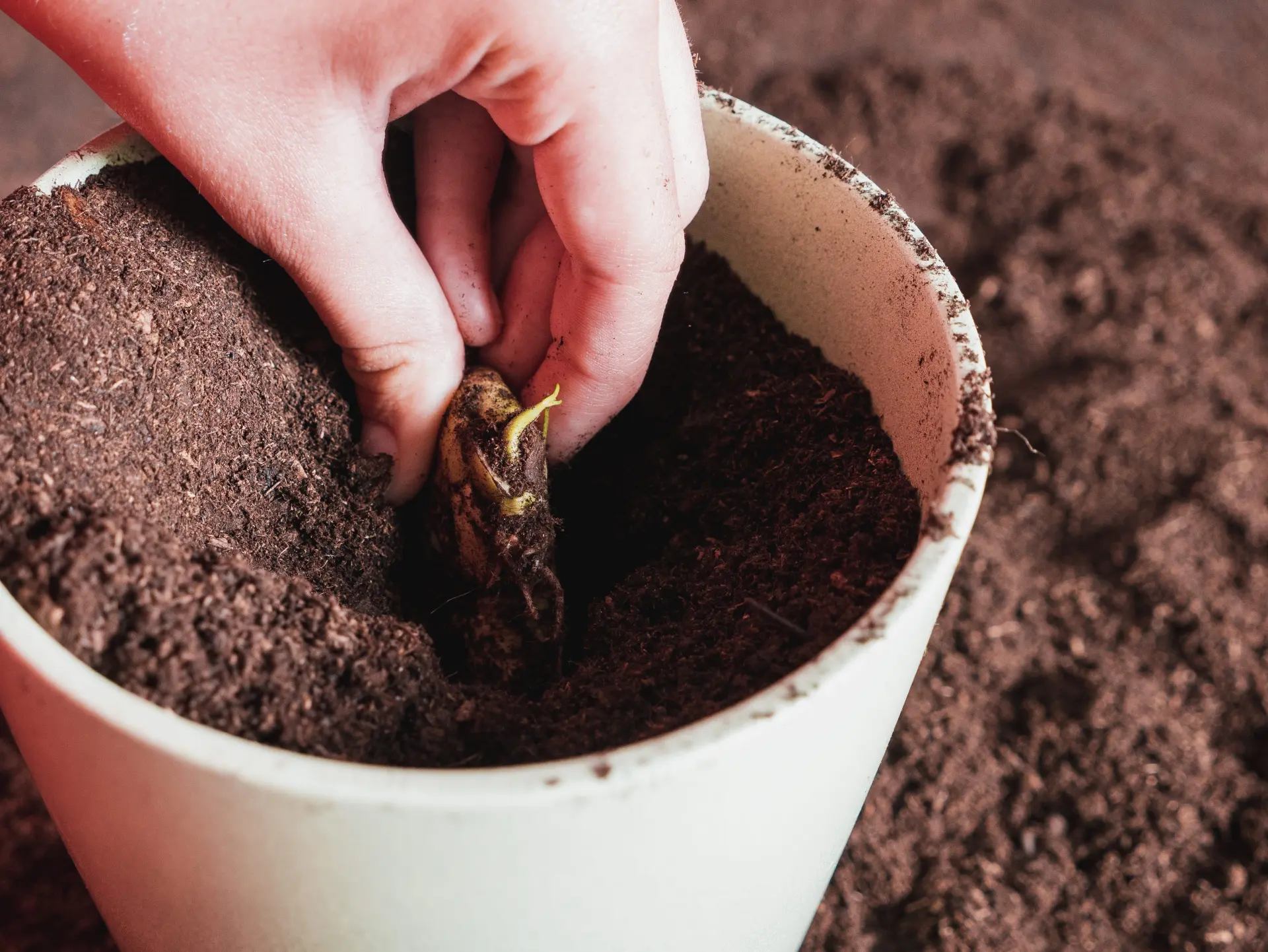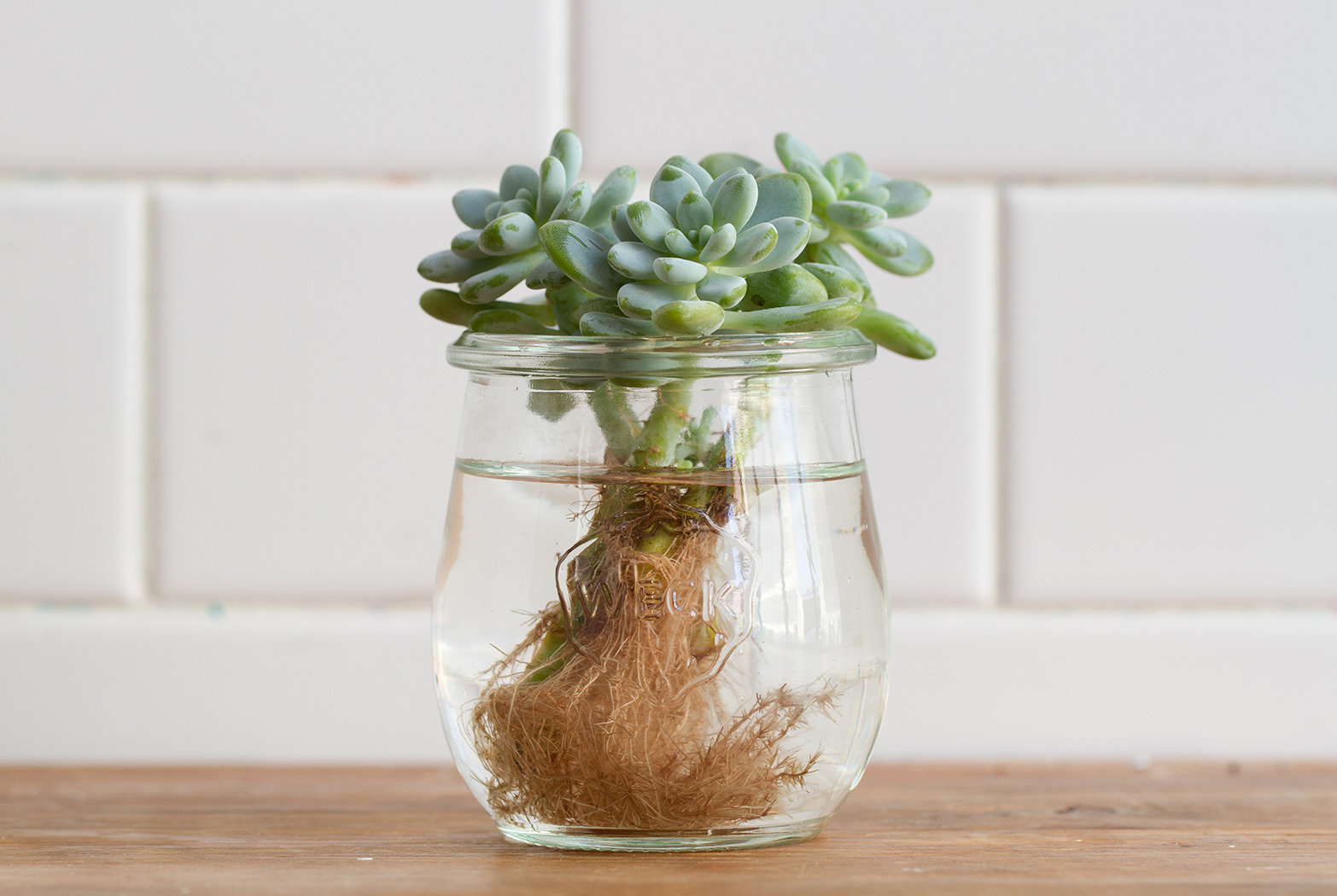Home>Gardening News and Trends>Gardening Trends>How To Speed Up Plant Propagation


Gardening Trends
How To Speed Up Plant Propagation
Published: February 3, 2024
Learn the latest gardening trends and techniques for speeding up plant propagation. Discover expert tips and methods to enhance your gardening experience.
(Many of the links in this article redirect to a specific reviewed product. Your purchase of these products through affiliate links helps to generate commission for Chicagolandgardening.com, at no extra cost. Learn more)
Table of Contents
Introduction
Introduction
Plant propagation is an essential skill for any gardener, allowing you to create new plants from existing ones. Whether you're a seasoned horticulturist or a beginner with a green thumb, mastering the art of plant propagation can be incredibly rewarding. Not only does it provide a cost-effective way to expand your garden, but it also offers a deeper connection to the plants themselves. Watching a new plant grow from a cutting or seed can be a truly magical experience, and it's a fantastic way to share your favorite plants with friends and family.
Propagation methods vary widely, from simple seed sowing to more advanced techniques such as air layering and grafting. Each method has its own unique set of requirements and benefits, and choosing the right approach depends on the specific plant species and your individual preferences. Furthermore, providing optimal growing conditions and proper care for newly propagated plants are crucial steps in ensuring their successful establishment.
In this comprehensive guide, we will explore the various methods of plant propagation, from the basic principles to the more advanced techniques. We will also delve into the importance of providing optimal growing conditions, using hormones and rooting compounds to stimulate root development, and caring for newly propagated plants. By the end of this article, you will have the knowledge and confidence to propagate a wide range of plants, enriching your gardening experience and reaping the rewards of a thriving, diverse garden.
Choosing the Right Method for Plant Propagation
When it comes to plant propagation, selecting the most suitable method is crucial for achieving successful results. Different plants respond better to specific propagation techniques, and understanding these methods is essential for effectively expanding your garden. Let’s explore the various approaches to plant propagation and the factors to consider when choosing the right method.
Seed Propagation:
- Seeds are a common and cost-effective way to propagate a wide range of plants, including flowers, vegetables, and herbs.
- Some plants have seeds that require stratification (exposure to cold temperatures) or scarification (breaking the seed coat) to germinate successfully.
- Seed propagation allows for genetic diversity and can be a rewarding process as you witness the entire growth cycle of a plant.
Cutting Propagation:
- This method involves taking a cutting from a healthy, established plant and encouraging it to develop roots and grow into a new plant.
- Softwood, hardwood, and semi-hardwood cuttings are used based on the maturity of the plant’s growth.
- Cutting propagation is ideal for reproducing plants with desirable traits and can result in genetically identical offspring.
Division:
- Division is commonly used for perennials and grasses, where the plant’s root system is divided into sections, each containing viable roots and shoots.
- This method rejuvenates overgrown plants and promotes healthier growth by reducing overcrowding.
- Plants suitable for division include hostas, ornamental grasses, and certain types of lilies.
Layering:
- Layering involves encouraging a stem or branch of the parent plant to produce roots while still attached, creating a new individual that can be separated once established.
- Air layering and simple layering are two common techniques used to propagate plants such as magnolias, rhododendrons, and climbing roses.
- This method is advantageous for plants with low natural rooting ability and those that are difficult to propagate by other means.
When deciding on the most suitable propagation method, consider the specific requirements of the plant species, the time of year, and your level of experience. Each technique offers unique advantages and challenges, and experimenting with different methods can broaden your horticultural skills and deepen your appreciation for the diverse mechanisms of plant reproduction.
Providing Optimal Growing Conditions
Creating an environment that fosters healthy growth is essential when propagating plants. By understanding and addressing the specific needs of newly propagated specimens, you can significantly increase their chances of thriving. Let’s delve into the key factors that contribute to optimal growing conditions for newly propagated plants.
Light:
- Proper light exposure is crucial for photosynthesis and overall plant development.
- Consider the light requirements of the plant species and provide the appropriate level of sunlight or artificial lighting.
- Adjust the light intensity and duration based on the plant’s growth stage and environmental conditions.
Temperature and Humidity:
- Maintain an optimal temperature range suitable for the specific plant species, taking into account day and night fluctuations.
- Provide adequate humidity levels, especially for plants that require higher moisture in the air.
- Utilize humidity domes or misting systems to create a humid microclimate for delicate cuttings and seedlings.
Watering and Drainage:
- Establish a consistent watering schedule, ensuring that the soil remains evenly moist without becoming waterlogged.
- Use well-draining growing mediums to prevent water stagnation and root rot.
- Monitor the moisture levels closely, adjusting the watering frequency based on the plant’s needs and environmental conditions.
Air Circulation:
- Promote good air circulation to prevent the development of fungal diseases and encourage sturdy growth.
- Position fans or ensure natural airflow within the propagation area to reduce the risk of stagnant, humid conditions.
- Adequate ventilation also helps strengthen young plants by simulating outdoor growing conditions.
Nutrition:
- Provide a balanced and suitable nutrient source for newly propagated plants, whether through a specialized rooting medium or a carefully formulated liquid fertilizer.
- Ensure that the nutrients are readily available to support the establishment of roots and the development of strong, healthy foliage.
- Monitor the plant’s response to the nutrients and make adjustments as needed to promote optimal growth.
By meticulously attending to these crucial aspects of plant care, you can create an environment that nurtures the successful establishment and growth of newly propagated plants. Each plant species may have specific requirements, so it’s important to tailor the growing conditions to suit their individual needs, ultimately setting the stage for vibrant, flourishing plants in your garden.
Using Hormones and Rooting Compounds
When propagating plants, the use of hormones and rooting compounds can significantly enhance the success rate of establishing new roots and promoting vigorous growth. These specialized products provide valuable support to cuttings and seedlings, accelerating the root development process and increasing the overall resilience of the propagated plants. Let’s explore the benefits and methods of using hormones and rooting compounds in plant propagation.
Rooting Hormones:
Rooting hormones, such as auxins, are synthetic or natural substances that stimulate the formation of roots on cuttings. They are available in various formulations, including powder, liquid, and gel forms. When applying rooting hormones:
- Select a rooting hormone strength suitable for the plant species and the type of cutting being propagated.
- Dip the cut end of the cutting into the rooting hormone, ensuring that it coats the area where roots will develop.
- Follow the manufacturer’s guidelines for application frequency and concentration to maximize effectiveness.
Rooting Compounds:
Rooting compounds are products designed to enhance root initiation and development in cuttings. They often contain a combination of auxins, fungicides, and other nutrients to support the cutting’s transition to an independent plant. When using rooting compounds:
- Apply the rooting compound to the cut end of the stem or the rooting area as directed on the product label.
- Ensure that the cutting is in contact with the rooting compound, allowing it to facilitate the growth of new roots.
- Choose a rooting compound that aligns with the specific needs of the plant species and the propagation method being employed.
Benefits of Hormones and Rooting Compounds:
By using hormones and rooting compounds in plant propagation, gardeners can experience several advantages, including:
- Increased rooting success rates, especially for challenging or slow-to-root plant varieties.
- Accelerated root development, allowing cuttings to establish themselves more quickly after being transplanted.
- Enhanced resistance to environmental stressors, promoting the overall vigor and health of newly propagated plants.
When incorporating hormones and rooting compounds into your propagation practices, it’s important to follow the product instructions carefully and consider the specific requirements of the plant species. By harnessing the benefits of these specialized products, you can optimize the propagation process and nurture robust, thriving plants in your garden.
Taking Care of Newly Propagated Plants
After successfully propagating plants, providing attentive care during the crucial early stages is essential for their long-term health and vitality. Newly propagated plants are more vulnerable to environmental stressors, and nurturing them through this delicate phase sets the foundation for robust growth and development. Let’s explore the key aspects of caring for newly propagated plants and ensuring their successful establishment in the garden.
Transplanting:
- When the newly propagated plants have developed sufficient roots, carefully transplant them into individual containers or the desired outdoor location.
- Handle the plants gently to avoid damaging the delicate roots and ensure that the planting depth aligns with the original soil level.
- Water the transplanted plants thoroughly to settle the soil around the roots and reduce transplant shock.
Watering:
- Maintain consistent moisture levels, ensuring that the soil remains evenly moist but not waterlogged.
- Monitor the newly propagated plants closely, adjusting the watering frequency based on environmental conditions and the plant’s individual needs.
- Utilize a gentle watering technique to prevent soil disturbance and root damage.
Protection from Environmental Stress:
- Shield the newly propagated plants from extreme temperatures, strong winds, and intense sunlight, gradually acclimating them to outdoor conditions if necessary.
- Utilize shade cloth, row covers, or temporary windbreaks to provide protection during the initial stages of establishment.
- Monitor the plants for signs of stress and promptly address any issues to minimize setbacks in growth.
Monitoring and Maintenance:
- Regularly inspect the newly propagated plants for signs of pests, diseases, or nutrient deficiencies, addressing any issues promptly.
- Remove any competing weeds or nearby vegetation that may impede the growth of the propagated plants.
- Prune or pinch back the plants as needed to encourage branching and promote a bushier growth habit.
Support and Staking:
- Provide support or staking for tall or leggy plants to prevent them from bending or breaking in windy conditions.
- Use soft ties or plant-friendly materials to secure the plants without causing damage to the stems or branches.
- Regularly check the stability of the supports and adjust them as the plants grow and mature.
By diligently tending to the needs of newly propagated plants and implementing proper care practices, you can facilitate their seamless transition into the garden environment. This attentive approach sets the stage for healthy, resilient plants that will contribute to the beauty and diversity of your garden for years to come.
Conclusion
Plant propagation is a captivating journey that allows gardeners to witness the miracle of life as new plants take root and flourish. By choosing the most suitable propagation method, providing optimal growing conditions, utilizing hormones and rooting compounds, and offering attentive care to newly propagated plants, you can cultivate a diverse and thriving garden filled with your favorite plant varieties.
Each propagation method, whether through seeds, cuttings, division, or layering, offers a unique opportunity to expand your plant collection and share the beauty of nature with others. The careful consideration of light, temperature, humidity, watering, and nutrition sets the stage for successful propagation and the establishment of healthy, resilient plants.
Furthermore, the strategic use of hormones and rooting compounds can significantly enhance the success rate of root development, accelerating the growth of new plants and bolstering their ability to withstand environmental stressors. By harnessing these specialized products, gardeners can optimize the propagation process and nurture robust, thriving plants in their gardens.
As newly propagated plants transition into their new environment, providing attentive care, protection from stressors, and ongoing maintenance is paramount. By tending to these delicate plants with diligence and care, you can ensure their successful establishment and long-term vitality in the garden.
Ultimately, plant propagation is a deeply rewarding practice that connects us to the fundamental processes of life and growth. It allows us to become active participants in the perpetuation of plant species, fostering a deeper appreciation for the intricate beauty of the natural world. Embrace the art of plant propagation, and let your garden flourish with the abundance of life that you have nurtured and cultivated.





